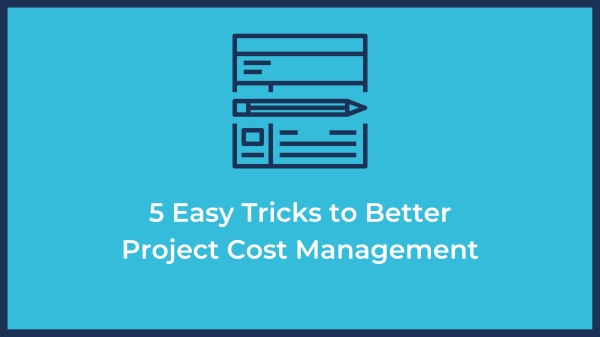5 Easy Tricks to Better Project Cost Management
Published: 17/12/2019
Free trial
See for yourself how you can save time and money. Enter your details below for a free 30 day no-obligation trial.

With this article, we aim to inform consultancy owners and finance managers about ways to exponentially improve project cost management. We will share a total of five tips. Adopting these will lead to smoother projects, more accurate forecasts, and the overall improvement of your business.
When it comes to project management, there are many areas to consider in mapping out a road to success. If we were to delve into all of them, this would become a very lengthy read. Therefore, we want to focus specifically on project cost management.
Meticulously managing expenses and budgets throughout the entire project lifecycle is a crucial aspect of a successful, results-oriented project strategy. It serves as the foundation for decision-making, task prioritisation, and ROI assessment. In other words, every element of the project hinges on effective budget management. If you feel this is an area that could benefit from some refinement, here are some pieces of advice.
Here are five key tips for improving your project cost management skills.
Analyse past results
Be certain of what your budget is
Prepare to face unexpected costs
Continuously monitor your budget
Communicate with your team
We’re often encouraged to learn from our mistakes to ensure better future outcomes. Project cost management is another area where this mindset applies. Reflect on past projects where you exceeded your budget significantly. Determine the reasons for this, and implement processes to prevent history from repeating itself.
The best way to achieve this is by extracting old data collected throughout the projects. By uploading it to cloud-based software, you can create comprehensive yet detailed visual reports. This makes it easy to identify specific areas of previous errors. It also guides future budgeting decisions, such as setting estimates.
In keeping with the theme of wise sayings, let’s emphasise that it’s better to be safe than sorry. Discovering a major forecasting error on a project while you’re in the middle of delivery could be quite disastrous. Therefore, always have a second – or even third – pair of eyes review the figures carefully. This could save you a great deal of hassle in the long run.
Or, even better, avoid the mistake altogether. Making mistakes is very human. Therefore, when the consequences are high stakes, it’s best to trust the machines. Some solutions that use data collected either natively, through integrations, or uploaded manually will provide you with forecasts that are free from errors. Additionally, by using centralised expense tracking business software, you will always have a clear view of expenditures and the remaining balance.
Man plans, God laughs. Yes, we’ve done this again. It’s quite rare for a long-term project to be completed without glitches. Certain problems outside your control could end up altering project costs. Accounting for such contingencies in the planning stage will help you better handle these issues should they arise.
This problem is best addressed during the initial stages of budget allocation. Instead of distributing all of it across project-specific tasks, set aside a portion of the budget to handle unexpected circumstances. As the saying goes, dig the well before you’re thirsty.
Projects must be monitored constantly; that’s a given. The same applies to project costs. You need to assess and adjust budgets in real time on a monthly or even weekly basis. In fact, an assessment is necessary every time a project change occurs (since any change is likely to impact spending).
This is time-consuming and counterproductive, yet essential. However, this challenge is also easily overcome with automation. If your budget information and data are entered into a SaaS system that manages project expenses, the business intelligence will handle most of the work for you. Your only responsibility is to open the dashboard and verify that the information is accurate.
Finally, projects are run by teams for a reason. When collaborating with others, transparency is essential for effective cost management. All team members involved in the project must be aware of the budget status. This way, they will be more motivated to monitor their personal project costs and inform you of any issues or discrepancies as soon as possible.
SaaS software is well-known for fostering team alignment by providing maximum visibility. Cloud-based systems for project cost management can be accessed and edited by multiple team members in real-time. They also track changes made instead of complete overwrites, facilitate in-platform communication through comments and notes, and generally create seamless collaboration experiences.
Most of these tricks can be quite time-consuming to implement. However, that’s not true if you rely on software. The pattern observed is that adopting these best practices digitally saves time. It also enhances accuracy and transforms into an ongoing automated process rather than a repetitive manual task.
Digital transformation in project management is now essential for achieving successful outcomes. It not only creates seamless workflows but also consolidates more insightful data than any manual approach can provide.
Interested in trying the software that enhances your project cost management? Schedule a demo to discover its features.